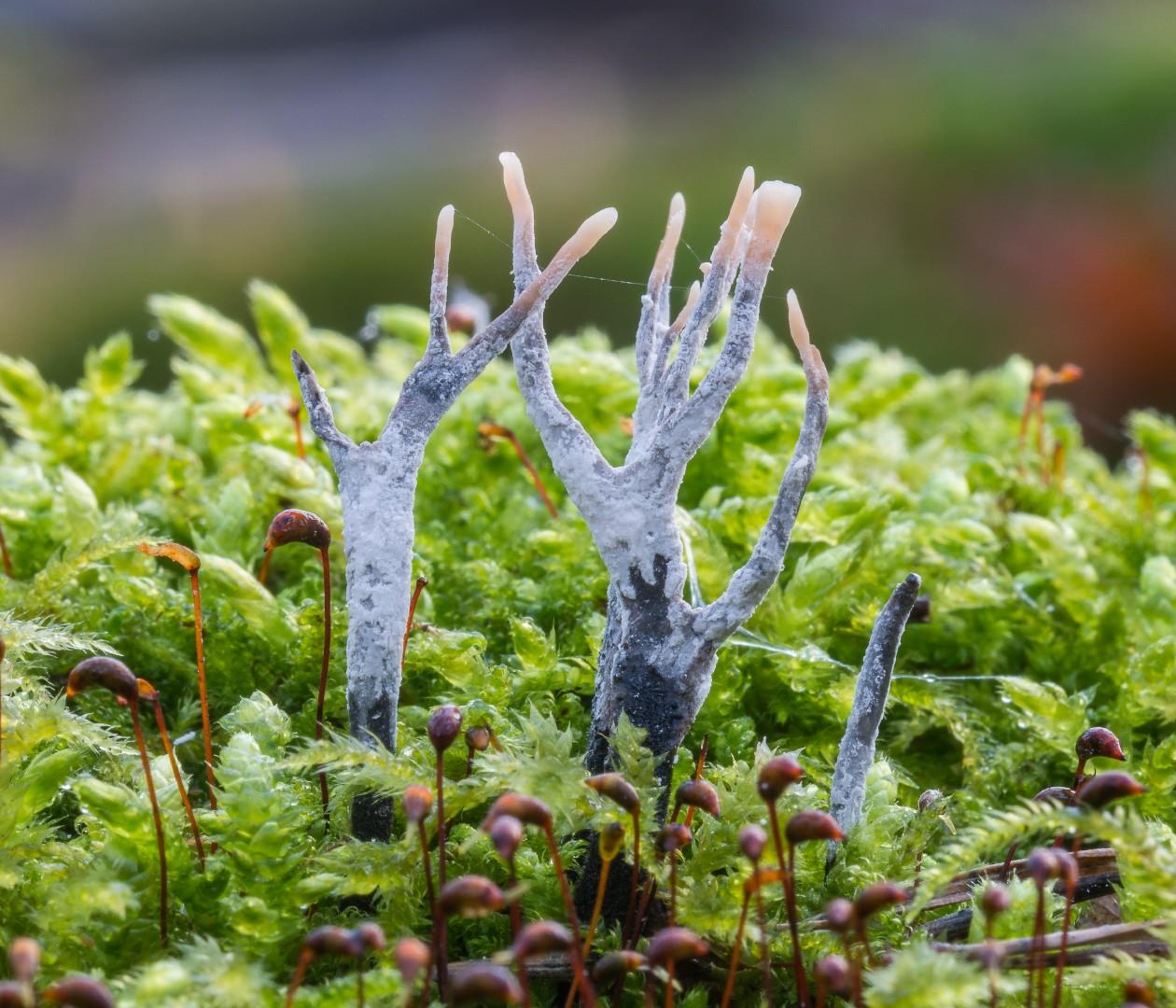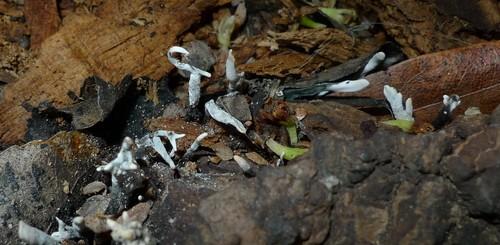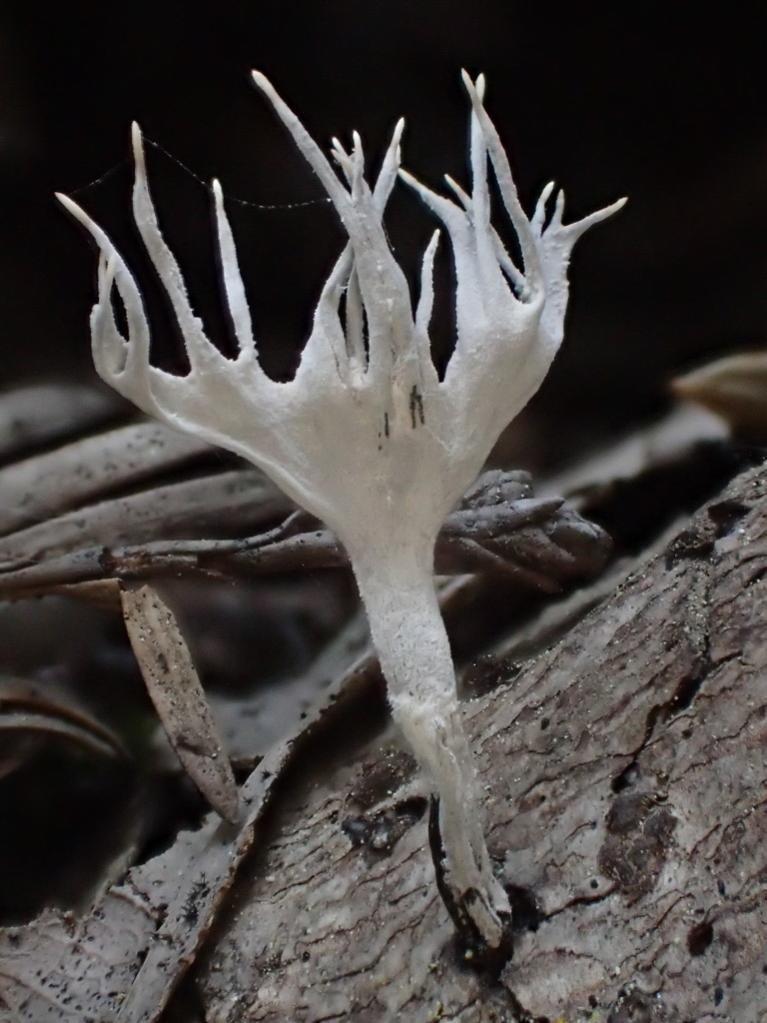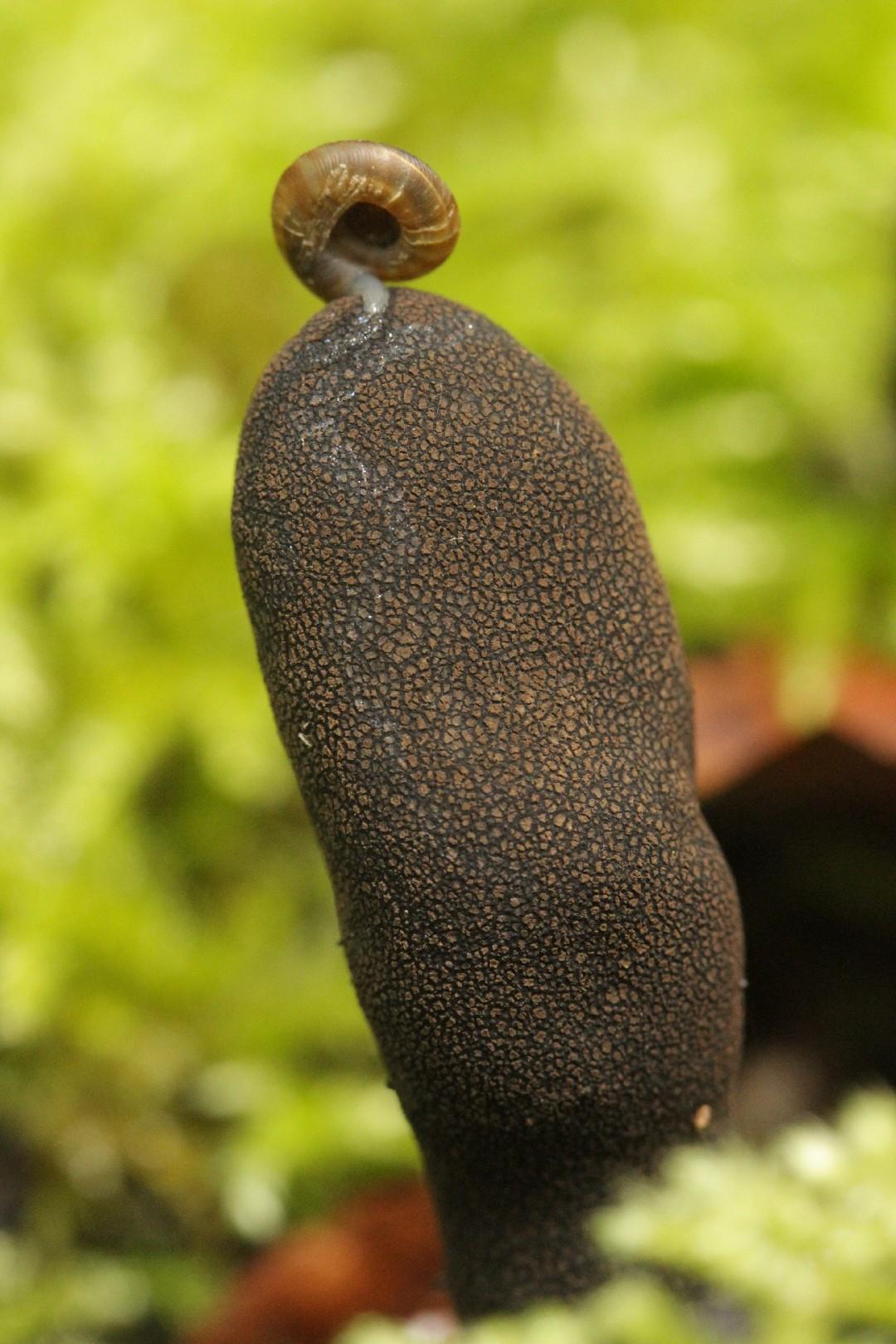



Candlesnuff fungus
Xylaria hypoxylon
A species of Xylaria. Also known as Stag's horn fungus.
You're unlikely to ever forget the unusual form of the candlesnuff fungus (Xylaria hypoxylon). From rotting wood emerge outgrowths resembling fingers, more akin to stalagmites or antlers than typical mushrooms. The stem transitions strikingly from black at its base to a vivid white at its apex.
Attributes of Candlesnuff fungus
Height
3 - 8 cm
Stem
Flattened and straplike, tough; black; finely hairy
Flesh
Tough; white
Spore Print Color
Black
Odor
Mildly mushroomy but not distinctive.
Body Color
BlackYellowGrayWhitePink
Flesh Bruises
The flesh or milk does not discolor when bruised or cut.
Growth Form
Scattered, Gregarious, Clustered
Nutrient Gathering
Saprophytic
Substrate
Dead Woods
You can find Candlesnuff fungus by these plants
European beech, Oaks
Occurence Habitats
Deciduous Woodland
Species Status
Distributed in Europe
Endangered Species
No
Scientific Classification of Candlesnuff fungus
Phylum
Sac fungi
Class
Sordariomycetes
Order
Xylariales
Family
Xylariaceae
Genus
Xylaria
Toxicity and Edibility of Candlesnuff fungus
Is Candlesnuff fungus Toxic?
Toxicity information is not available for this mushroom. Always consult with an expert before consuming any wild mushrooms.
Is Candlesnuff fungus Toxic to Dogs?
Candlesnuff fungus can be dangerous to dogs. If your pet has consumed this mushroom, seek immediate veterinary attention. Symptoms may vary, but early intervention is crucial for the best outcome.
